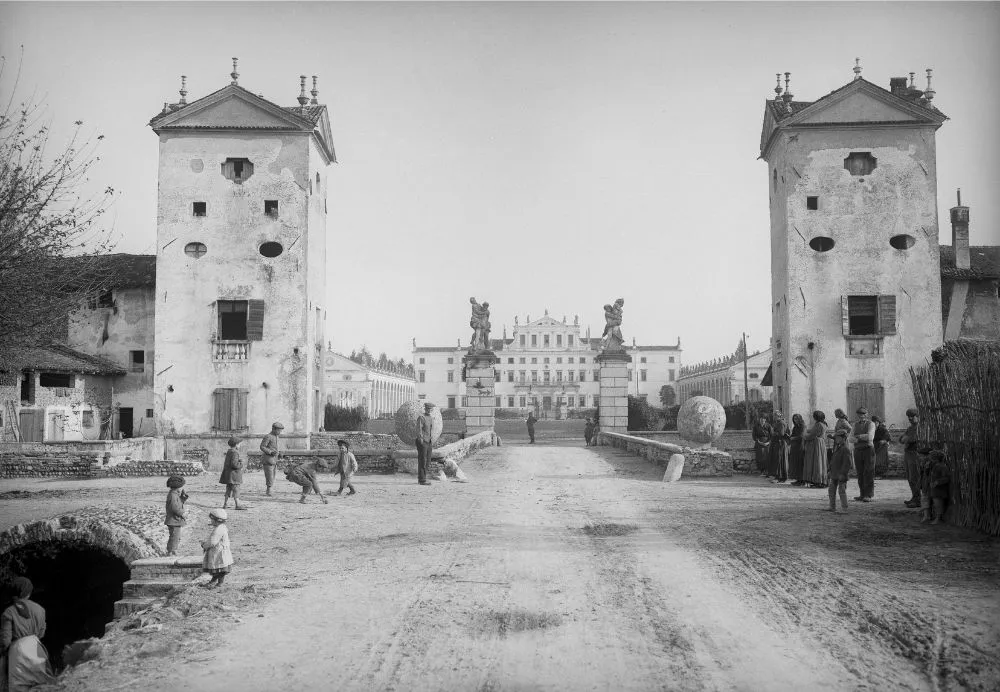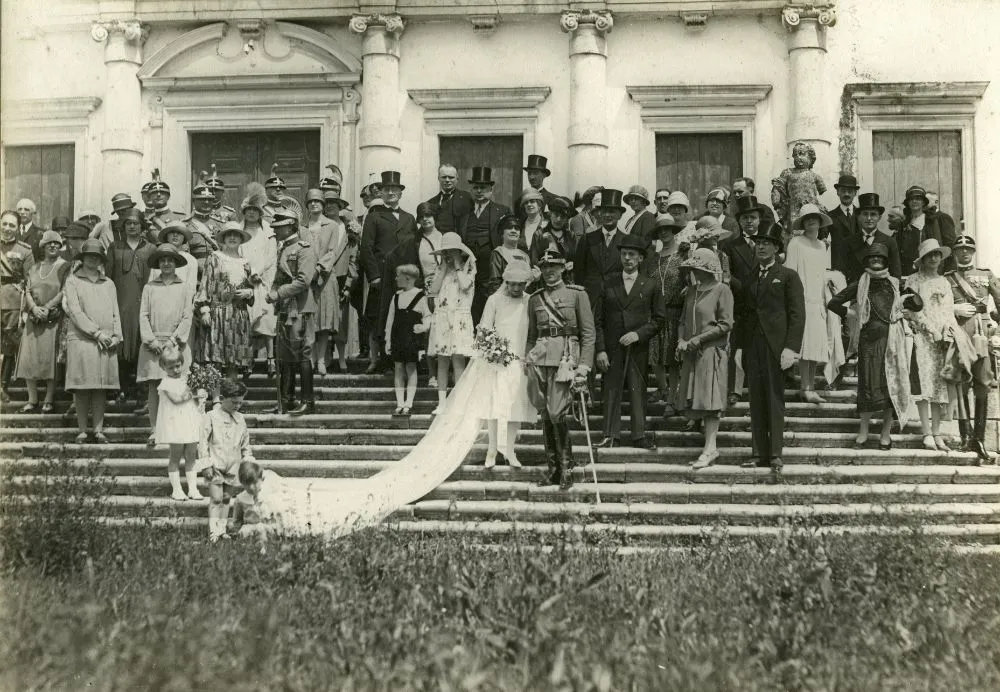A story in pictures
From 12.01.2024 to 30.09.2025
The photographs exhibited here were presented for the first time at Villa Manin at the end of 2019. We are now re-proposing this partly supplemented and enriched itinerary.
It has at its centre not the ancient Doge’s splendour or the famous passage of Napoleon, but the events of the villa since the end of the nineteenth century. A story so far only told on the occasion of the above-mentioned exhibition and interwoven with dramatic moments but also dense with curious episodes rendered with immediacy by unpublished or little-known images.
Approximately one hundred photographs document the compendium between the beginning and the middle of the century, recording the historical events that passed through it, the glimmers of a dynasty in its twilight years and, more often, the minute and lively existence of the community that inhabited it.
Portrayed in the late 19th and early 20th century still closed in on itself and complete with its rich sculptural decoration, the superb mansion soon finds itself, once again, at the centre of history.
The First World War had already broken out when King Victor Emmanuel III stopped at Villa Manin during one of his many visits to the front, shortly before the rout of Caporetto saw it crossed by fleeing troops and refugees. The limelight then falls on the sovereigns of the opposing states, Kaiser Wilhelm II and Emperor Charles I of Austria. Evocative shots mix enemy soldiers and commoners.
The Second World War assigned the palace a different function. Carlo Someda de Marco had the ground floor rooms opened to house and protect works of art from the Friuli and Venezia Giulia regions from the impending disaster. The post-World War II photographs in the park document a sculptural heritage to be recomposed, restoring lost heads to statues, correcting improper assemblages, putting landed deities back on their feet.
They also tell us of the liveliness of the village’s young people who celebrate the age and beauty of their countrywomen on the walls of the Piazza Quadra, also plastered with electoral propaganda posters, with little regard for the dignity of the aristocratic residence, now unable to hide its ailments.
The descendants of one of the richest and most powerful families of the Serenissima are immortalised on the last occasions of splendour: a belle époque wedding, elegant get-togethers, leisurely strolls and playful hunts in the park.
In the spaces in front of the villa, on the other hand, the curiosity of children, the industrious comings and goings of the peasants with their carts and the tools of daily life, geese, hens and dogs, undisturbed masters of the large square, are all portrayed.
The choice of images, taken from public photo libraries and archives, but also from the collections of private citizens, generous collaborators and enthusiasts, has led to an exhibition that is intended to be the first, small part of a history still largely to be written.


